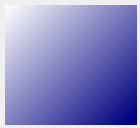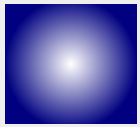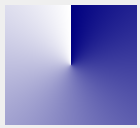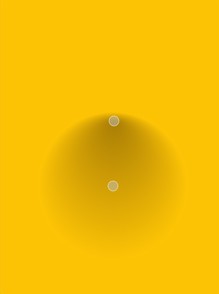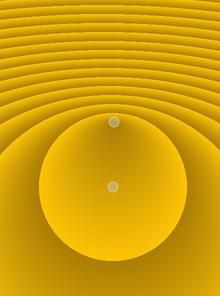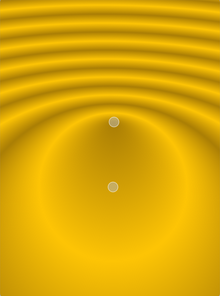QGradient Class
The QGradient class is used in combination with QBrush to specify gradient fills. More...
| Header: | #include <QGradient> |
| Inherited By: |
Public Types
| enum | CoordinateMode { LogicalMode, StretchToDeviceMode, ObjectBoundingMode } |
| enum | Spread { PadSpread, RepeatSpread, ReflectSpread } |
| enum | Type { LinearGradient, RadialGradient, ConicalGradient, NoGradient } |
Public Functions
| CoordinateMode | coordinateMode() const |
| void | setColorAt(qreal position, const QColor & color) |
| void | setCoordinateMode(CoordinateMode mode) |
| void | setSpread(Spread method) |
| void | setStops(const QGradientStops & stopPoints) |
| Spread | spread() const |
| QGradientStops | stops() const |
| Type | type() const |
| bool | operator!=(const QGradient & gradient) const |
| bool | operator==(const QGradient & gradient) const |
Related Non-Members
| typedef | QGradientStop |
| typedef | QGradientStops |
Detailed Description
The QGradient class is used in combination with QBrush to specify gradient fills.
Qt currently supports three types of gradient fills:
- Linear gradients interpolate colors between start and end points.
- Simple radial gradients interpolate colors between a focal point and end points on a circle surrounding it.
- Extended radial gradients interpolate colors between a center and a focal circle.
- Conical gradients interpolate colors around a center point.
A gradient's type can be retrieved using the type() function. Each of the types is represented by a subclass of QGradient:
The colors in a gradient are defined using stop points of the QGradientStop type; i.e., a position and a color. Use the setColorAt() function to define a single stop point. Alternatively, use the setStops() function to define several stop points in one go. Note that the latter function replaces the current set of stop points.
It is the gradient's complete set of stop points (accessible through the stops() function) that describes how the gradient area should be filled. If no stop points have been specified, a gradient of black at 0 to white at 1 is used.
A diagonal linear gradient from black at (100, 100) to white at (200, 200) could be specified like this:
QLinearGradient linearGrad(QPointF(100, 100), QPointF(200, 200)); linearGrad.setColorAt(0, Qt::black); linearGrad.setColorAt(1, Qt::white);
A gradient can have an arbitrary number of stop points. The following would create a radial gradient starting with red in the center, blue and then green on the edges:
QRadialGradient radialGrad(QPointF(100, 100), 100); radialGrad.setColorAt(0, Qt::red); radialGrad.setColorAt(0.5, Qt::blue); radialGrad.setColorAt(1, Qt::green);
It is possible to repeat or reflect the gradient outside its area by specifiying the spread method using the setSpread() function. The default is to pad the outside area with the color at the closest stop point. The currently set spread method can be retrieved using the spread() function. The QGradient::Spread enum defines three different methods:
Note that the setSpread() function only has effect for linear and radial gradients. The reason is that the conical gradient is closed by definition, i.e. the conical gradient fills the entire circle from 0 - 360 degrees, while the boundary of a radial or a linear gradient can be specified through its radius or final stop points, respectively.
The gradient coordinates can be specified in logical coordinates, relative to device coordinates, or relative to object bounding box coordinates. The coordinate mode can be set using the setCoordinateMode() function. The default is LogicalMode, where the gradient coordinates are specified in the same way as the object coordinates. To retrieve the currently set coordinate mode use coordinateMode().
See also The Gradients Demo and QBrush.
Member Type Documentation
enum QGradient::CoordinateMode
This enum specifies how gradient coordinates map to the paint device on which the gradient is used.
| Constant | Value | Description |
|---|---|---|
QGradient::LogicalMode | 0 | This is the default mode. The gradient coordinates are specified logical space just like the object coordinates. |
QGradient::StretchToDeviceMode | 1 | In this mode the gradient coordinates are relative to the bounding rectangle of the paint device, with (0,0) in the top left corner, and (1,1) in the bottom right corner of the paint device. |
QGradient::ObjectBoundingMode | 2 | In this mode the gradient coordinates are relative to the bounding rectangle of the object being drawn, with (0,0) in the top left corner, and (1,1) in the bottom right corner of the object's bounding rectangle. |
This enum was introduced or modified in Qt 4.4.
enum QGradient::Spread
Specifies how the area outside the gradient area should be filled.
| Constant | Value | Description |
|---|---|---|
QGradient::PadSpread | 0 | The area is filled with the closest stop color. This is the default. |
QGradient::RepeatSpread | 2 | The gradient is repeated outside the gradient area. |
QGradient::ReflectSpread | 1 | The gradient is reflected outside the gradient area. |
See also spread() and setSpread().
enum QGradient::Type
Specifies the type of gradient.
| Constant | Value | Description |
|---|---|---|
QGradient::LinearGradient | 0 | Interpolates colors between start and end points (QLinearGradient). |
QGradient::RadialGradient | 1 | Interpolate colors between a focal point and end points on a circle surrounding it (QRadialGradient). |
QGradient::ConicalGradient | 2 | Interpolate colors around a center point (QConicalGradient). |
QGradient::NoGradient | 3 | No gradient is used. |
See also type().
Member Function Documentation
CoordinateMode QGradient::coordinateMode() const
Returns the coordinate mode of this gradient. The default mode is LogicalMode.
This function was introduced in Qt 4.4.
See also setCoordinateMode().
void QGradient::setColorAt(qreal position, const QColor & color)
Creates a stop point at the given position with the given color. The given position must be in the range 0 to 1.
See also setStops() and stops().
void QGradient::setCoordinateMode(CoordinateMode mode)
Sets the coordinate mode of this gradient to mode. The default mode is LogicalMode.
This function was introduced in Qt 4.4.
See also coordinateMode().
void QGradient::setSpread(Spread method)
Specifies the spread method that should be used for this gradient.
Note that this function only has effect for linear and radial gradients.
See also spread().
void QGradient::setStops(const QGradientStops & stopPoints)
Replaces the current set of stop points with the given stopPoints. The positions of the points must be in the range 0 to 1, and must be sorted with the lowest point first.
See also setColorAt() and stops().
Spread QGradient::spread() const
Returns the spread method use by this gradient. The default is PadSpread.
See also setSpread().
QGradientStops QGradient::stops() const
Returns the stop points for this gradient.
If no stop points have been specified, a gradient of black at 0 to white at 1 is used.
See also setStops() and setColorAt().
Type QGradient::type() const
Returns the type of gradient.
bool QGradient::operator!=(const QGradient & gradient) const
Returns true if the gradient is the same as the other gradient specified; otherwise returns false.
This function was introduced in Qt 4.2.
See also operator==().
bool QGradient::operator==(const QGradient & gradient) const
Returns true if the gradient is the same as the other gradient specified; otherwise returns false.
See also operator!=().
Related Non-Members
typedef QGradientStop
Typedef for QPair<qreal, QColor>.
typedef QGradientStops
Typedef for QVector<QGradientStop>.
© 2016 The Qt Company Ltd. Documentation contributions included herein are the copyrights of their respective owners. The documentation provided herein is licensed under the terms of the GNU Free Documentation License version 1.3 as published by the Free Software Foundation. Qt and respective logos are trademarks of The Qt Company Ltd. in Finland and/or other countries worldwide. All other trademarks are property of their respective owners.

